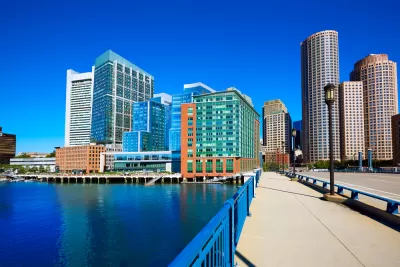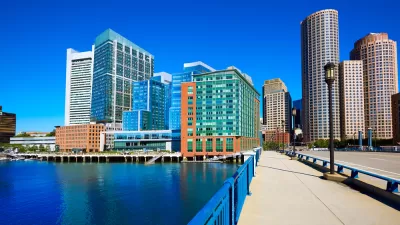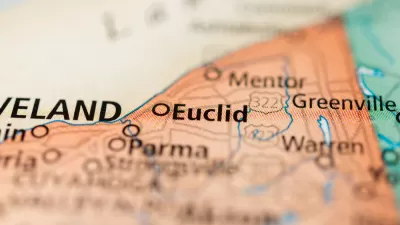Boston would hardly seem capable of resembling "Anytown, USA" but that might be precisely what's happening in the Seaport neighborhood of the city's waterfront.

The list of large investments in the South Boston Waterfront over the past three decades is impressive. An article by Jon Chesto begins by noting all the changes "The cleanup of the harbor. The vast convention center. The Big Dig. And then, after the Great Recession, all the construction, and the new offices it brought."
Yet Chesto also notes that some, like local resident Valerie Burns, have noticed something is still missing: "There are no schools, no library. It’s hard to find a place to play soccer or baseball. And the biggest problem Burns sees? There simply aren’t enough neighbors."
It's true that the area currently has 2,000 housing units—"nearly double the amount that existed five years ago"—with more on the way. Yet "longstanding questions remain about the role housing plays in the city’s waterfront evolution," writes Chesto.
The article provides a lot more detail about the legacy of planning efforts for the area, and how development so far has succeeded, or failed, its expectations for the area.
FULL STORY: Some residents worry Seaport will lack neighborhood feel

Planetizen Federal Action Tracker
A weekly monitor of how Trump’s orders and actions are impacting planners and planning in America.

Maui's Vacation Rental Debate Turns Ugly
Verbal attacks, misinformation campaigns and fistfights plague a high-stakes debate to convert thousands of vacation rentals into long-term housing.

San Francisco Suspends Traffic Calming Amidst Record Deaths
Citing “a challenging fiscal landscape,” the city will cease the program on the heels of 42 traffic deaths, including 24 pedestrians.

Defunct Pittsburgh Power Plant to Become Residential Tower
A decommissioned steam heat plant will be redeveloped into almost 100 affordable housing units.

Trump Prompts Restructuring of Transportation Research Board in “Unprecedented Overreach”
The TRB has eliminated more than half of its committees including those focused on climate, equity, and cities.

Amtrak Rolls Out New Orleans to Alabama “Mardi Gras” Train
The new service will operate morning and evening departures between Mobile and New Orleans.
Urban Design for Planners 1: Software Tools
This six-course series explores essential urban design concepts using open source software and equips planners with the tools they need to participate fully in the urban design process.
Planning for Universal Design
Learn the tools for implementing Universal Design in planning regulations.
Heyer Gruel & Associates PA
JM Goldson LLC
Custer County Colorado
City of Camden Redevelopment Agency
City of Astoria
Transportation Research & Education Center (TREC) at Portland State University
Jefferson Parish Government
Camden Redevelopment Agency
City of Claremont




























